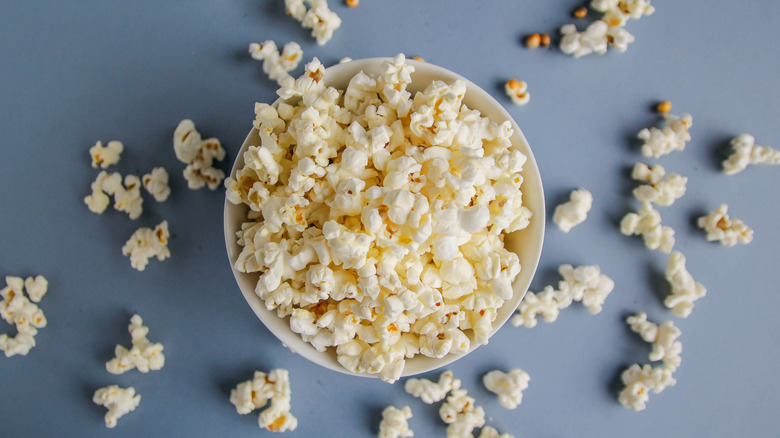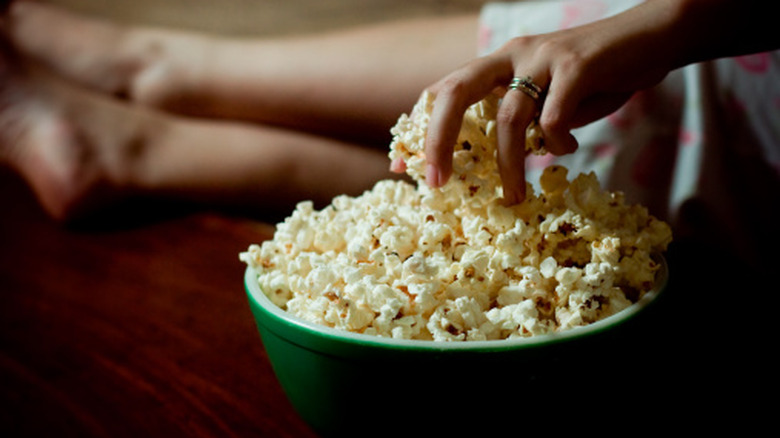What Type Of Corn Is Popcorn And Why Are The Kernels So Hard?
Popcorn is a universally adored snack, perfect for Friday nights at the movies, Saturday mornings at the theme park, or even Tuesday afternoons on a bowl of warm soup. We know through name alone that popcorn comes from corn, but not just any kernel will pop into the crunchy snack we know and love. The species of corn that's most commonly used for traditional popcorn is called Zea mays everta, a subspecies of flint corn known for its rock-hard shell that explodes into a delicious treat when heated.
"Zea mays everta" roughly translates to "corn turned inside out," which is exactly what happens when these kernels are cooked. When the corn is harvested, the kernels are partially dehydrated, trapping a small portion of water inside as the outer layer solidifies. Before those kernels pop, the starch inside is extremely tough, which is why it hurts so much to bite into unpopped pieces. But, if the kernels are heated to around 212 degrees Fahrenheit, the steam buildup causes the shell to burst open, softening and exposing the interior starch. As it cools, this starch then solidifies into the fluffy, irresistible shapes we're familiar with.
Not all corn can be used for popping
Popcorn, aka Zea mays everta, is a subspecies of flint corn (Zea mays indurata), bred specifically for its ability to pop when heated. Moisture content and temperature can affect the quality of popcorn, but corn distributors are super picky when it comes to the kind of corn they use for popping. Regular flint corn is used for cornmeal and flour, while dent corn is most commonly used as animal feed. Sweet corn is the one we buy every year for Labor Day cookouts, while ornamental corn is the colorful prop that decorates Thanksgiving tables. While other species of corn may pop when introduced to heat, none of them will have the same taste or quality as Zea mays everta.
There are many varieties of popcorn, but they typically only pop in two shapes. There's the snowflake shape, like the buttery popcorn you'd find at movie theaters, and the mushroom shape, like kettle corn and caramel corn. Even the bag of kernels that you pop in the microwave or on the stovetop are all Zea mays everta. Since corn is the most produced grain worldwide, it's easy to see why people are curious about making their own popcorn. So, can you create popcorn out of that aging stalk of corn at the back of the fridge? The answer is no, probably not, but don't let that stop you from turning it into a savory cornbread instead.

